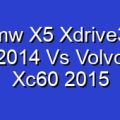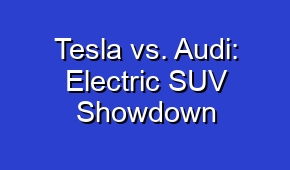Ford Explorer 2017 Vs Ford Edge 2017

Comparing the Ford Explorer 2017 and the Ford Edge 2017, two popular SUVs from the renowned automaker. Discover the key differences and similarities between these two models to help you make an informed decision when choosing your next vehicle.
| Feature | Ford Explorer 2017 | Ford Edge 2017 |
|---|---|---|
| Engine | 3.5L V6 | 2.0L EcoBoost Inline-4 |
| Horsepower | 290 hp | 245 hp |
| Torque | 255 lb-ft | 275 lb-ft |
| Transmission | 6-speed automatic | 6-speed automatic |
| Drive Type | Front-wheel drive / All-wheel drive | Front-wheel drive / All-wheel drive |
| Seating Capacity | 7 | 5 |
| Cargo Space | 21 cubic feet (behind 3rd row) | 39.2 cubic feet (behind 2nd row) |
| Fuel Economy (City / Highway) | 17 mpg / 24 mpg | 20 mpg / 29 mpg |
| Infotainment System | Sync 3 | Sync 3 |
| Touchscreen Display | 8-inch | 8-inch |
| Bluetooth Connectivity | Yes | Yes |
| Apple CarPlay / Android Auto | Yes | Yes |
| Backup Camera | Yes | Yes |
| Blind Spot Monitoring | Available | Available |
| Lane Departure Warning | Available | Available |
Engine
The Ford Explorer 2017 is equipped with a 3.5L V6 engine, while the Ford Edge 2017 has a smaller 2.0L EcoBoost Inline-4 engine. The Explorer offers more power and performance with 290 horsepower and 255 lb-ft of torque, compared to the Edge’s 245 horsepower and 275 lb-ft of torque.
Transmission and Drive Type
Both the Explorer and Edge have a 6-speed automatic transmission and offer the option of front-wheel drive or all-wheel drive. These drivetrain options provide flexibility for different driving conditions and preferences.
Seating Capacity and Cargo Space
The Ford Explorer can accommodate up to seven passengers, making it a suitable choice for larger families or those who frequently travel with a group. On the other hand, the Ford Edge offers seating for five passengers. In terms of cargo space, the Explorer provides 21 cubic feet behind the third row, while the Edge offers 39.2 cubic feet behind the second row.
Fuel Economy
The Ford Edge 2017 boasts better fuel efficiency compared to the Explorer. The Edge achieves an estimated 20 mpg in the city and 29 mpg on the highway, while the Explorer has a slightly lower fuel economy of 17 mpg in the city and 24 mpg on the highway.
Infotainment and Connectivity
Both the Ford Explorer and Edge are equipped with the Sync 3 infotainment system, featuring an 8-inch touchscreen display. They offer Bluetooth connectivity, Apple CarPlay, Android Auto, and a backup camera. Additionally, advanced safety features like blind spot monitoring and lane departure warning are available in both models.





















